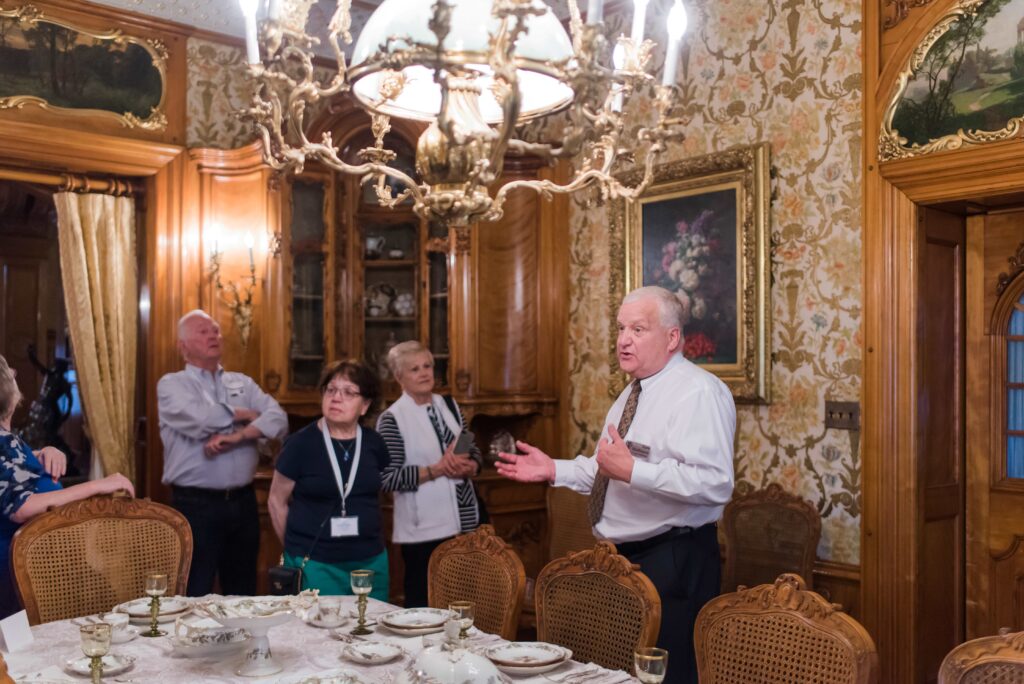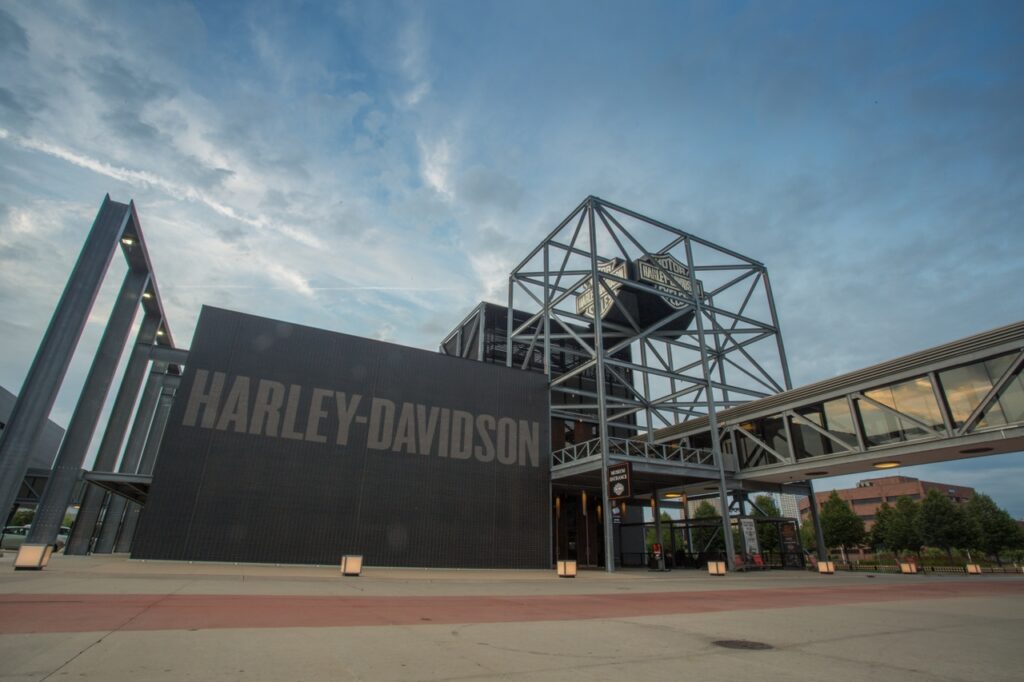August 7, 2023 · Theresa
What are Milwaukee’s Top Places to Visit for Art, Culture, and History?
Milwaukee, located on the western shore of Lake Michigan, is the largest city in Wisconsin. It’s known for its vibrant arts scene, historic architecture, numerous museums, and cultural festivals held throughout the year. Here are some of the top cultural places to visit in Milwaukee:

Milwaukee Art Museum
This striking building on the Lake Michigan shoreline houses an extensive collection of over 30,000 works of art, ranging from ancient objects to contemporary art. The museum’s Quadracci Pavilion, designed by Spanish architect Santiago Calatrava, is an iconic city symbol.
The Milwaukee Art Museum is a major landmark and a significant cultural institution in Milwaukee, Wisconsin. The museum’s history is extensive, dating back to the late 19th century, with its collection growing and evolving over time.
The Milwaukee Art Museum’s roots go back to 1882, when the Milwaukee Museum of Fine Arts was founded, although it had no permanent collection at that time. In 1888, the Milwaukee Art Association was established by a group of German panorama artists and local businessmen; its first home was the Layton Art Gallery.
In 1957, the Milwaukee Art Institute, an organization that had evolved from the Milwaukee Art Association, merged with Layton Art Gallery. This merger resulted in the creation of the Milwaukee Art Center (now called the Milwaukee Art Museum). The museum was housed in a three-building complex that included the War Memorial Center (1957), designed by renowned architect Eero Saarinen, the Kahler Building (1975), and the Saarinen Building.
In the early 21st century, a significant addition to the museum complex was made. The Quadracci Pavilion, designed by Spanish architect Santiago Calatrava, was completed in 2001. Calatrava’s design, featuring a stunning, wing-like brise soleil that opens and closes twice daily, has become an iconic image for the city of Milwaukee.
Today, the museum houses over 30,000 works, with collections that cover everything from antiquity to the present day. In addition to its permanent collection, the Milwaukee Art Museum hosts many traveling exhibits and features a variety of educational programs and special events. Its collection contains important works by such artists as Georgia O’Keeffe, Pablo Picasso, Wassily Kandinsky, and Andy Warhol, among others.
The Milwaukee Art Museum is a testament to Milwaukee’s rich cultural history and its commitment to the arts.

Historic Third Ward
This area was originally an Irish immigrant neighborhood in the mid-1800s. Today, it’s home to a vibrant mix of art galleries, boutiques, theaters, restaurants, and the Milwaukee Public Market. Need suggestions for the Best Historic Third Ward Restaurants in Milwaukee? Check it out in our blog post!
The Historic Third Ward, often simply referred to as the Third Ward, is a historic and vibrant neighborhood in Milwaukee, Wisconsin. Its history is marked by waves of immigration, destruction and renewal, and its present-day status as a thriving arts and fashion district.
The Third Ward Fire (1892): The neighborhood was nearly destroyed by a massive fire in 1892, which resulted in fatalities and displaced thousands of residents. After the fire, the Irish population started moving to other parts of the city, and Italian immigrants began settling in the Third Ward.
During its heyday, The Third Ward kind of became a mix of residential immigrants & on the other side of Milwaukee Street, warehousing & light manufacturing. After the 1960’s, the Italians moved out and 80% of all the buildings in The Third Ward were condemned by the city. After the Italian max exodus, this area became abandoned.
The Third Ward was reclaimed block by block, building by building with little or no government involvement outside of making this Business Improvement District and a grant in the early 1990’s. To hear more about that great story, join us for an in-depth experience with one of our local tour guides on our Around the Ward in 90 Minutes tour!
Pabst Mansion
This is the former home of Captain Frederick Pabst, the founder of the Pabst Brewing Company. The mansion offers a glimpse into Milwaukee’s past, with beautifully restored interiors that reflect the opulence of the Gilded Age.
The Pabst Mansion in Milwaukee, Wisconsin, is a historic landmark that tells the story of the city’s beer-brewing heritage.
The mansion was built between 1890 and 1892 as the home of Captain Frederick Pabst, who was the co-founder of the Pabst Brewing Company, one of the largest and most famous breweries in the United States at the time. The mansion, designed by architect George Bowman Ferry and Alfred Charles Clas, is a grand example of the Flemish Renaissance Revival style, an architectural style not commonly seen in the United States.
The Pabst family lived in the mansion until 1908. After Captain Pabst’s death in 1904, his widow Maria sold the property in 1908 to the Archdiocese of Milwaukee, which used it as the archbishop’s residence for more than six decades.
During its time as the archbishop’s residence, a number of changes were made to the mansion. Some of the original features were altered or removed, and a chapel was added in 1948. Despite these changes, the mansion remained a symbol of the city’s rich past.
By the mid-1970s, the Archdiocese decided to sell the mansion. It was nearly demolished to make way for a parking lot, but local preservationists fought to save the building. In 1975, the mansion was sold to Wisconsin Heritages, Inc., a non-profit organization dedicated to preserving the mansion and opening it to the public.
Extensive restoration work was undertaken to return the mansion to its former glory. Original furnishings and decorations were sought out and returned, and the rooms were restored to their original appearance.
Today, the Pabst Mansion is a museum that provides a glimpse into Milwaukee’s Gilded Age history. It’s listed on the National Register of Historic Places and offers guided tours that showcase its beautiful interiors and rich history.
Milwaukee Food & City Tours loves to show off the Pabst Mansion and we are ready to provide you with a personalized tour experience to showcase this unique Milwaukee gem!

Milwaukee Public Museum
This natural and human history museum houses a wide variety of exhibits that span several centuries and continents. It’s known for its life-sized dioramas, including those depicting Milwaukee in different eras.
The Milwaukee Public Museum, or MPM, dates back to 1882 when it was first established as an independent entity spun off from the German-English Academy’s natural history collection. The museum’s focus has always been on the natural and human history of the world.
In its early days, the museum moved through various locations within Milwaukee, including the Layton Art Gallery building and the Milwaukee County Courthouse, to accommodate its growing collection. The museum finally settled into its current location on West Wells Street in 1963. Since then, it has become renowned for its extensive collections and life-sized dioramas, which cover a wide range of subjects.
The Milwaukee Public Museum is planning a significant move and transformation, with a new building. The new facility, estimated to be around 230,000 square feet, is planned to be a state-of-the-art museum that will ensure the long-term preservation of MPM’s collections and enhance its educational and visitor services. It’s expected to feature innovative exhibitions and public spaces to provide an improved visitor experience.
The future of the MPM represents an exciting time of transformation for one of Milwaukee’s oldest and most beloved institutions. Check the museum’s official website for the most current information and details about their future plans.

Harley-Davidson Museum
If you’re a fan of motorcycles, this museum is a must-visit. It showcases the history of the Harley-Davidson Motor Company, with a wide range of exhibits that include vintage and custom-designed motorcycles.
The Harley-Davidson Museum, located in Milwaukee, Wisconsin, is a celebration of the rich history and cultural significance of the iconic Harley-Davidson motorcycle brand. The museum opened its doors to the public in 2008, but its roots trace back to the establishment of the Harley-Davidson Motor Company itself in 1903.
Over the years, the company started accumulating an extensive collection of artifacts, motorcycles, documents, and photographs. Recognizing the historical value of these items, the company decided to build a museum to house and display them.
The construction of the 130,000-square-foot museum complex began in 2006 on a 20-acre site in the Menomonee Valley in Milwaukee, near the location of the original Harley-Davidson factory. The museum’s architecture was designed to reflect the industrial roots of the brand.
The museum was officially opened in 2008. It features an extensive collection of motorcycles and other Harley-Davidson artifacts, including the oldest known Harley-Davidson motorcycle in existence. The museum also includes exhibits on motorcycle culture, the history and growth of the company, and the design and technology of the motorcycles.
The Harley-Davidson Museum continues to be a popular tourist destination, attracting Harley-Davidson enthusiasts, motorcycle lovers, and history buffs from all over the world.

Bronze Fonz
This statue commemorates the beloved character Arthur Fonzarelli (aka “The Fonz”) from the TV show “Happy Days,” which was set in Milwaukee.
The Bronze Fonz is a public artwork by American artist Gerald P. Sawyer, located on the Milwaukee Riverwalk in downtown Milwaukee, Wisconsin.
The life-size bronze statue commemorates the iconic character Arthur Fonzarelli, better known as “The Fonz,” from the television series “Happy Days,” which aired from 1974 to 1984. The Fonz, played by Henry Winkler, was a leather jacket-wearing, motorcycle-riding, smooth-talking figure who became one of the show’s most beloved characters. “Happy Days” was set in Milwaukee, hence the statue’s placement in the city.
The Visit Milwaukee tourism organization commissioned the statue. It was unveiled on August 19, 2008, with various members of the “Happy Days” cast, including Henry Winkler (the Fonz himself), in attendance.
The Bronze Fonz captures the character in his iconic thumbs-up pose, a gesture frequently made on the show. The statue quickly became a popular tourist attraction and photo opportunity for visitors and locals alike.
Milwaukee County Zoo
This 200-acre zoo has over 2,000 animals representing more than 300 species. The Milwaukee County Zoo in Milwaukee, Wisconsin, is a popular attraction known for its wide variety of animal species and its dedication to conservation.
The Milwaukee County Zoo continues to be an important center for animal care, conservation, and education in the region. For the most up-to-date information, please refer to the zoo’s official website or contact them directly.

Brewery & Bar Tours in Milwaukee
Milwaukee is home to numerous craft breweries, distilleries and historic bars. Whether you stick with classic Wisconsin traditions or are one to explore new trends, we have a tour for you. Did you know that it was German immigrants who brought with them the knowledge of German Brewing techniques that established Milwaukee as “Brew City”? That Milwaukee has become home to a growing distillery and cocktail scene? Whether you are in the mood for a German pretzel or a breakfast Bloody Mary, come along for a delicious libation and fun history.
Take in a Bloody Mary Brunch, a Historic Bar Tour, or a Craft Beer & Distillery tour with Milwaukee Food & City Tours to discover the best breweries and distilleries in Brew City at https://www.milwaukeefoodtours.com/brewery-bar-tours/

Summerfest
Held annually in late June and early July, this is one of the largest music festivals in the world. It features a diverse lineup of artists and attracts music lovers from all over the globe.
Summerfest is a hugely popular music festival held annually in Milwaukee, Wisconsin. It’s recognized as one of the largest music festivals in the world based on the number of performers and attendees. Here’s a brief history of Summerfest:
- Inception (1968): The first Summerfest took place in 1968. The festival was introduced by then-mayor Henry Maier, who was inspired by a visit to Oktoberfest in Munich, Germany. Maier envisioned a similar festival that would invigorate Milwaukee’s downtown area.
- Early Years (1968 – 1970s): The inaugural Summerfest featured a variety of events scattered across 35 separate locations in the city. It wasn’t until the 1970s that the festival found a permanent home at the Henry Maier Festival Park on Milwaukee’s lakefront.
- Growth and Development (1980s – Present): Summerfest continued to grow throughout the decades, attracting top musicians across various genres, from rock and country to R&B, pop, reggae, and more. The festival now spans over 11 days and hosts over 800 acts on 11 stages, entertaining audiences of nearly 900,000 people annually.
- Notable Performances: Over the years, Summerfest has seen performances by some of the biggest names in music, including The Rolling Stones, Tina Turner, James Brown, Cher, Britney Spears, Bruno Mars, and many more.
- Current Setup: The festival continues to be held at Henry Maier Festival Park. The venue includes various stages, food and beverage vendors, marketplaces, and interactive exhibits.
Summerfest is more than just a music festival—it’s a celebration of community, diversity, and the arts that has become a beloved tradition in Milwaukee. For the most current information about the festival, please visit its official website or contact the organizers directly.

If you’re looking to explore the fascinating history of Milwaukee but don’t have much time, let us help! Milwaukee Food & City Tours is here to provide you with a personalized tour experience and even arrange transportation for you. We’re experts in showcasing all the unique aspects that make Milwaukee such a special city.
Try One of Our Tours!
Savor the true heart of Chicago with our fun, expert guides. Visitors get a taste of the real deal, and locals discover new go-to favorites.
